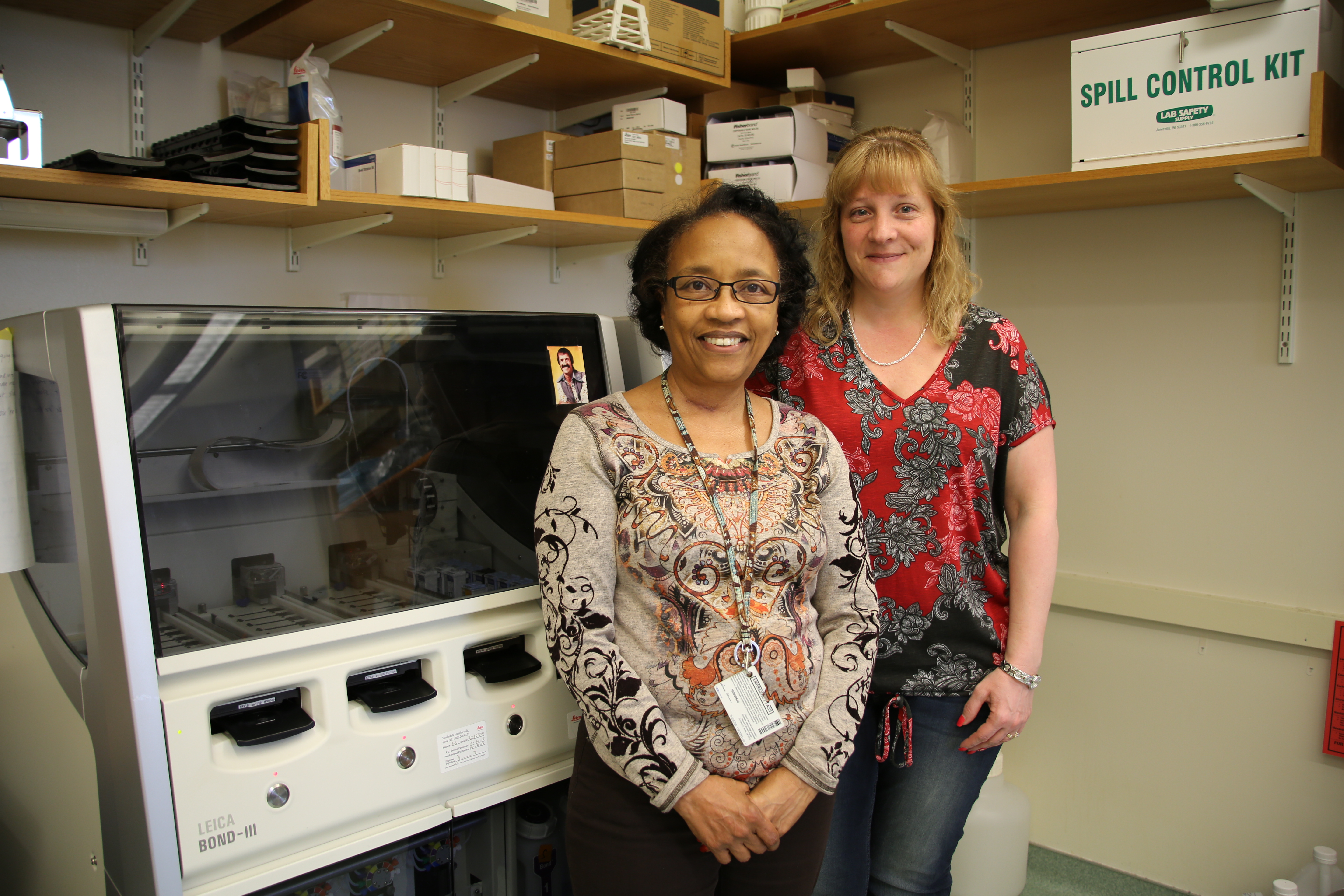BWH Labs Celebrate National Histotechnology Day

From left: Histology supervisor Donna Skinner and Teresa Bowman, with the team’s staining technology
On March 10, BWH labs recognized National Histotechnology Day and the role histotechnologists play in patient care and research.
Using tissue samples from patients, plants or preclinical models, histotechnologists process, slice and stain samples for pathologists. In a clinical setting, these stains can help to diagnose cancers and other disorders in patients, while other tissue samples help with research.
“We are proud that our work contributes directly to patient care,” said Teresa Bowman, manager of the Specialized Histopathology Lab, which is directed by Jon Aster, MD, PhD.
The National Society of Histotechnology started celebrating the work of histotechnologists four years ago, as there was no existing day or event drawing attention to their work. For Pathology labs, where dedicated technicians sometimes work seven days per week and through holidays, the day of national recognition serves as a positive way to highlight the role they play in patient care.
Each day, the Specialized Histopathology Lab can process and stain anywhere from 20 to 150 tissue samples, depending on demand, and the team typically processes more than 4,000 cases each year. While most of the samples are research-related, the lab also tests preclinical samples for drug efficacy and assesses different types of treatment.
There are five primary steps to histotechnolgy. First, technicians must examine and trim tissue samples to fit on the slides and then place them in chemical solutions to prevent decomposition. Next, the water is removed from the tissue and substituted with wax to provide support, after which the sample is embedded into a larger block of wax. The block of wax and tissue are then placed on an instrument called a microtome, where small sections are cut to form a thin ribbon. These sections of ribbon are placed on slides for observation. Finally, the slides are stained with different dyes to identify cell structures, antibodies or other structures that will help a pathologist or researcher make a diagnosis.
“A lot of people will tell you it’s an art form and that not everyone can do it,” says Bowman. “The tissue can be dry and tissues with disease can be more difficult to section, so you have to have some patience and take the time and finesse to get a good section.”
Although the role histotechnologists play may fly under the radar of most patients, Bowman is proud of the work the lab completes day in and day out.
“The clinical diagnosis and the satisfaction of getting a tough stain to work are the most rewarding parts of the job,” Bowman said. “Although some people don’t know we are here, we are an important part of the diagnostic process.”

Leave a Reply